Checking accounts
As electronic payments proliferate, Americans continue to write fewer and fewer paper checks. Checks represented nearly half of noncash payments as recently as 2003, but that number plummeted to just 15 percent in 2012. The number of checks paid fell to roughly 18 billion in 2012, from 42 billion in 2000, a decline of nearly 60 percent, according to the Federal Reserve's most recent data. Nevertheless, many consumers maintain a checking account even if they rarely write paper checks. Checking accounts are commonly the accounts from which funds are withdrawn for debit card payments and other forms of electronic payment.
Checks are orders used to tell a bank or other depository institution to pay money to or transfer funds from the check writer to the check recipient. Financial institutions offer several types of checking accounts.
- The demand deposit account is the most common. Money is available to the account holder "on demand"—by writing a check, making an electronic payment from the account via debit card or other means, making a withdrawal from an automated teller machine (ATM), or transferring funds from one account to another.
- Interest-bearing checking accounts are also offered by most types of financial institutions. These accounts pay interest to account holders based on the amount of funds in the account and an interest rate set by the financial institution backing the account.
Checking account fees vary widely. Many accounts include fees for blank checks, for checks written, for hard copies of canceled checks, and for returned checks and overdrafts. Other common fees are a general service charge and a fee if the minimum balance falls below a certain level.
Check collection and processing
A check written on a particular bank and cashed by or deposited into an account at the same bank is handled within that bank. These "on-us" checks account for more than one-quarter of all checks. Other checks are called transit checks because they must move (these days electronically) between different banks.
Processing a check
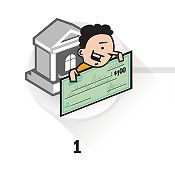

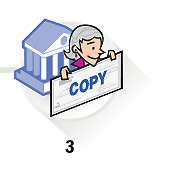
The Federal Reserve's check collection network
The Federal Reserve is the largest nationwide processor of checks, handling about a third of all checks in the United States. The Federal Reserve provides check collection and other payment services for a fee to financial institutions that accept deposits.
Because of the dramatic decline in the volume of checks and more efficient electronic methods for clearing checks, the Federal Reserve has steadily shrunk its check processing infrastructure. Today the Fed operates a single facility in Atlanta to process paper checks, down from 45 such processing locations in 2003.
Check conversion—turning a paper check into an electronic payment
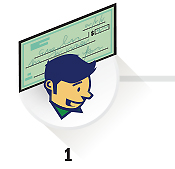
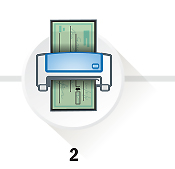
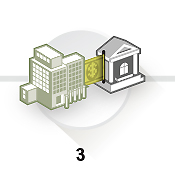
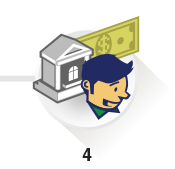
Check 21
Until 2004, state laws required that an original paper check be presented to the check writer's bank for settlement unless banks had an agreement to exchange checks electronically. To make check processing faster, virtually no banks still send paper checks to other banks to receive payment. Instead, banks exchange checks electronically.
A 2004 federal law, the Check Clearing for the 21st Century Act—also known as Check 21—facilitates the electronic exchange of checks. Check 21 permits banks to replace original checks with "substitute checks," special paper copies of the front and back of the original check that are the legal equivalent of the original check. Banks create an image of a check, send the image electronically to another location, and then print a substitute check from the image to present for payment locally.
Learn more about Federal Reserve Bank Services at frbservices.org/.
Special checks
Sometimes a special check that carries a greater guarantee of payment is necessary. The financial institution typically charges a fee for these items.
- Certified checks are usually used when required by legal contract, such as real estate or automobile sale agreements. Certified checks are considered less risky than personal checks because the bank on which they are drawn has certified that the funds are available in the check writer's account.
- Cashier's checks have a better guarantee of payment because they are drawn by a bank against its own account.
- Money orders work like personal checks for people without a checking account or those who prefer not to make payments with cash. You can buy money orders at banks, post offices, and some retail stores.
- Traveler's checks are sold through banks and travel companies. Lost or stolen traveler's checks will be replaced by the issuing company.
A check may be returned for several reasons. Insufficient funds in the check writer's account and a closed account or stop payment order are examples. If a bank refuses to honor a check, the check must be returned to the bank where the check was first deposited within a time specified by law.



